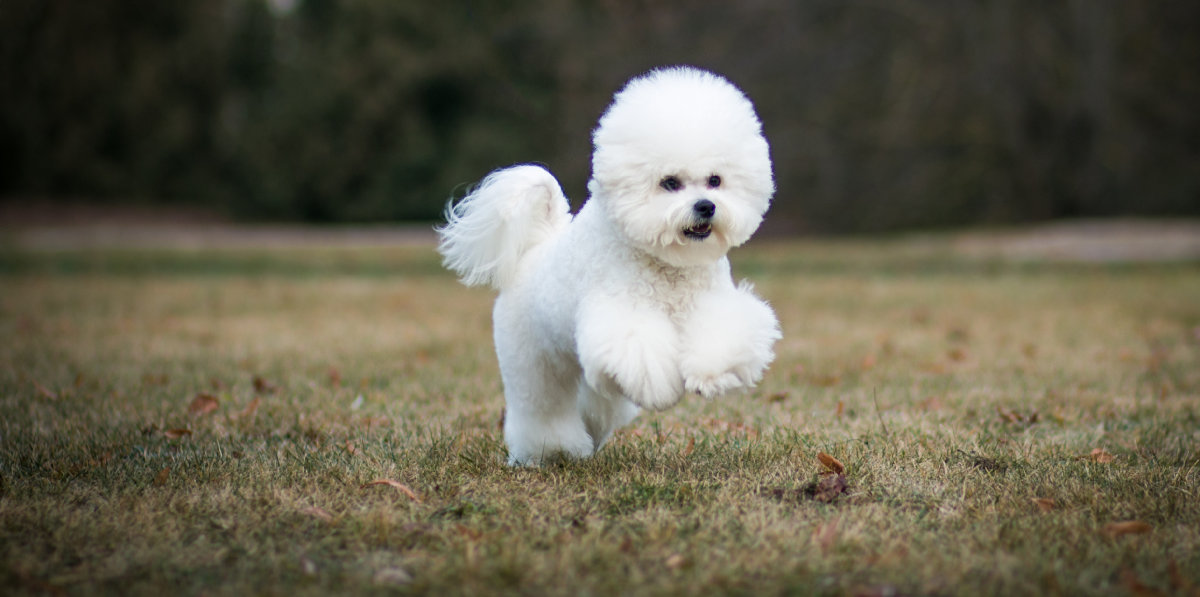
Bichon Frise – Fluffy Toy Dog
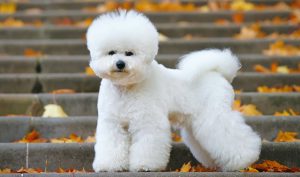
Image:Eudyptula/Shutterstock.com
A few quick facts about the Bichon Frise
| Name | Bichon Frise - Toy |
|---|---|
| Size | Small |
| Grooming | Difficult |
| Training | Easy |
| Exercise | Daily / 20 to 30 minutes a day |
| Origins | France |
Bichon Frise The Tiny Dog that Looks Like A Cloud!
Bichon Frise A Dog with a lot of history.
Fancy a little ball of fluff who can trace its ancestor to most of Mediterranian Europe? Then look no further as the Bichon Frisé packs a lot of love and character into its tiny frame. As they say, good things come in small packages. So read on and see if this is the dog for you.
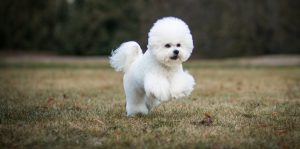
Image: Eve Photography/Shutterstock.com
Quick Overview
Name: Bichon Frisé or the Bichon a Poil Frisé, in French.
Size: Tiny, no bigger than 11 inches tall.
Weight: Not a lot, maybe 5 pounds if you are lucky.
Grooming: Not As much as you would think!.
Training: Half-and-half hard and easy.
Exercise: Very little.
Lifespan: Up to 15 years
Origins: Tenerife/France/Spain/Italy
Breed Type: Toy
A Little Bichon Frise History
The Bichon a Poil Frisé (the Bichon of the curly hair) started life in close relation to a half dozen other tiny toy white dogs, one of which was the Maltese. These little whites were all descended from the Barbichon breed of old, which was gradually eradicated as its genes were favourably bred in different parts of the world.
This little toy dog hails originally from Tenerife. The sailors that frequented the Canaries eventually bred a short, cute version of the Barbichon to work their boats. The ships often picked up rats and the presence of a cat or dog would see them off. This Barbichon eventually came to be known as the Bichon Tenerife. It is thought that the French courts of King Francis and then Napoleon bred them to be toy-sized, using poodles as the genetic parents.
Sometime in between all those crossings, the Bichon Tenerife got noticed by the European upper classes. They took it, bred it to be tiny, and released it on the royalty of the time. From the 13th century onwards, there are paintings and depictions of these lovely little dogs all over Europe.
A Dog With Many Homes
France, Italy, and Spain all played host to breeders – but the French Revolution put a stop to all of that. Many of their breeders found themselves separated from their heads and the packs were promptly either released onto the streets or taken in by well-meaning commoners. At this point in history, it was not uncommon to see them performing as part of street or circus acts since they were small, cute, nimble, and easily trained.
Two World Wars later, the little toy with "the curly hair" was suddenly popular again. in 1971 the AKC recognised them, about the same time as they were introduced to Australia. The UK Kennel Club already recognised them of course, since they are considered to be descended from ancient breeds. Nowadays they are frequently kept as companions and their hair is often shaped into poodle cuts.
Fun Facts About your Bichon Frise Puppy!
Every type of dog has fun or interesting facts that you can enjoy. If you are the proud new owner of a bichon Frisé puppy then congratulations! And here are the best bits about owning this breed type, as told by the team here at Five Minutes Spare:
- As well as being a breed under the kennel clubs of the world, you can also join the Bichon Frisé Club of Great Britain if you happen to be one of their owners. It’s a fairly exclusive club… they have biscuits.
- The famous Spanish artist Francisco de Goya painted Bichons in several of his works including the one pictured below:
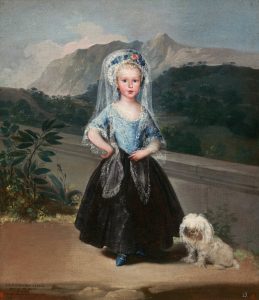
Maria Teresa de Borbón y Vallabriga, later Countess of Chinchón.
Image NGA.Gov
- In the 19th century (the 1800s), the Bichon Frisé was so popular in France that it became the ‘common dog’ that you found roaming the streets.
- It is believed that the Italian sailors of the 1300s were the ones responsible for trading them with the noble courts.
- After the French Revolution, it is said that these dogs were taken in by street performers, who would train them to do tricks for coins.
So the Bichon Frisé has a long history of both love and neglect. Hopefully, you will treat your puppy as they deserve to be treated… like a lapdog bred to accompany kings.
Are Bichon Frise Hard to Train?
They are notoriously easy to train, hence why they were kept by the nobility. Their sweet, gentle temperament is only garnered through socialisation, however. Far too many Bichons end up in shelters because they weren’t socialised properly and thus grew up to be angry little dogs. Obedience training will kill this in them in one swoop.
Do Bichon Frisé Puppies Need Lots of Grooming?
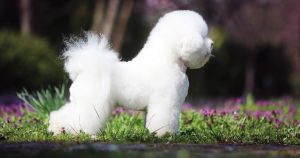
Image: SubertT/Shutterstock.com
Actually, no which is surprising when you look at the picture above! They have water dog hair, which is just like that of the poodle. They are even considered to be hypo-allergenic since they don’t shed. If you brush them once a week it will be good bonding for you both and you will stop their coat from matting. Bathe them once in a while, cut their nails if you have to, and clean their teeth.
What About Exercise?
They are such small dogs that they get enough exercise around the house and garden. That being said, a happy dog is a walked dog. Take them out to explore.
Do They Have Lots of Health Problems?
You should get a vet to inspect their hips and shoulder joints for signs of deformity around the year-old mark. If they have dysplasia it will show around then. They also have a history of patellar luxation and should have their eyes and skin checked for allergies or eye issues. Other than that, the poodle is often cross-bred to make designer dog breeds at the moment. This is because they have quite hardy genetics and go well with everything.
Where Can I Buy a Bichon Frisé Puppy?
You will be able to find a purebred Bichon by searching through your local Kennel Club’s pages. They keep track of ‘stud books’, which record the lineage of each dog. A puppy from a registered breeder comes with a title, the paperwork, and a good knowledge of familial history on the off-chance you want to breed your new puppy yourself. By comparison, buying from an unregistered breeder there is a chance you have come across a puppy farm, so do be careful.
Our favourite way to buy a Bichon is by putting in a request at a local shelter. These are small dogs; whose owners tend not to socialise them out of fear. This means they quite often show up in shelters as undisciplined dogs.
So there we have it the Five Minutes Spare overview of this delightful little ball of love. Why not check out our other Toy Dog Breeds while you are here.
Not The Right Breed for You?
If the Bichon isn’t hitting the right buttons, you can find all sorts of breed types over in the dog directory found on Five Minutes Spare. We have detailed everything from the majestic Belgian Shepherd (there are four to choose from!) to the triumphant Bedlington Terrier. Every dog is possible when you have five minutes to spare.